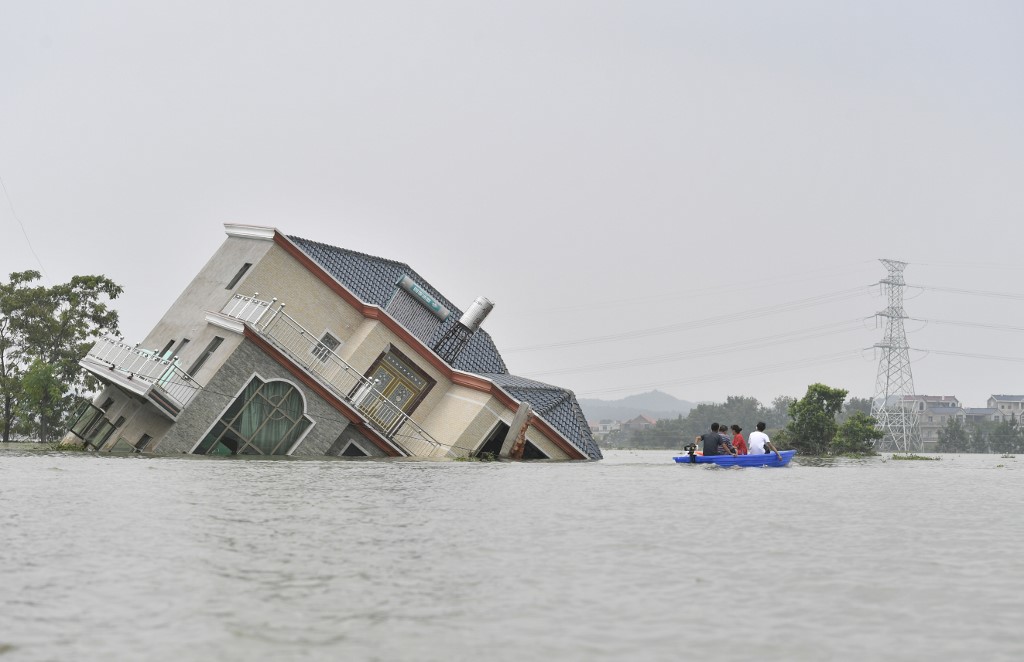SHANGHAI: China’s banking and insurance regulator announced measures on Saturday to further increase credit and lending support and insurance protection for areas that suffered from recent floods.
The China Banking and Insurance Regulatory Commission (CBIRC) said in a statement that financial institutions in the flood-hit areas cannot blindly withdraw, delay or cut credit lines to the companies who have good development prospects but whose operations were suspended by the floods.
The regulator also encouraged financial institutions to lower lending rates appropriately and improve their loan extension policy to help relevant companies to tide over difficulties.
Separately, the CBIRC urged insurers to properly perform investigations and claims settlement and arrange financial resources in advance to help flood-hit companies and people resume production and normal lives in a timely manner.
The move comes at a time when large parts of China are reeling from the worst floods in decades, which destroyed homes and affected millions of people.
Economic activity in some parts of the country, especially construction and steel and cement demand, has also been hurt by the flooding, analysts say, suggesting some loss of momentum after a stronger than expected bounce in the second quarter from the coronavirus crisis.
Large parts of central and southern China have been hit hard by the worst floods in decades – some say since the early 60s.
This has caused disruption to company supply chains, including for personal protective equipment (PPE), vital in the fight against the novel coronavirus.
The central city of Wuhan and the provinces of Anhui, Jiangxi and Zhejiang declared red alerts as heavy rain swelled rivers and lakes.
Wuhan, on the banks of the Yangtze river where the novel coronavirus emerged late last year, warned residents to take precautions as water levels fast approached their maximum guaranteed safety level.
The summer rainy season brings floods to China almost every year but the impact of the disruption they cause is being felt further afield as Chinese goods become more important in global supply chains for various items, including PPE.
“It’s just creating another major roadblock here in terms of PPE getting into the United States – it is the worst of times for it to happen but that’s what we’re dealing with right now,” said Michael Einhorn, president of Dealmed, a US medical supply distributor, which sources disposable lab coats and other products from Wuhan and nearby regions.
“We cannot get product out for over a week, which is a very long time in our business,” he said, adding that the delays could last up to three weeks.
Xiantao, just west of Wuhan, is China’s biggest manufacturer of non-woven fabrics used in PPE production. A third of China’s total exports of non-woven fabric products are from the city.
With the relentless rain, more misery seems inevitable.
Shanghai also on red alert
The giant Three Gorges reservoir, which has been holding back more water to try to ease downstream flood risks, is more than 10 metres higher than its warning level, with inflows now at more than 50,000 cubic metres a second.
The Poyang lake in Jiangxi province, which is formed from the overspill of the Yangtze, is 2.5 metres higher than its warning level. It has expanded by more than 2,000 square kilometres during thus flood season, and parts of the surrounding town have been inundated.
Further east, the Tai lake near Shanghai has also declared a red alert after its water level rose to nearly a metre higher than its safe level.
Economic activity in other parts of China, especially construction and steel and cement demand, has also been hurt by the flooding, analysts say, suggesting some loss of momentum after a stronger than expected bounce in the second quarter from the coronavirus crisis.
“We estimate recent floods in Yangtze River regions could lead to a gross drag of 0.4-0.8 percentage points on third-quarter GDP growth,” analysts at Morgan Stanley said in a note to clients on Friday.























